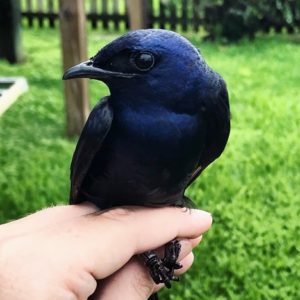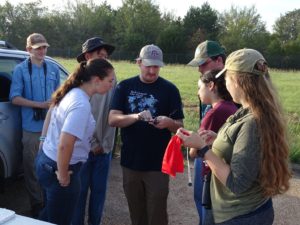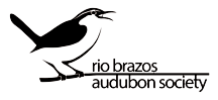“Nature has been for me, for as long as I remember, a source of solace, inspiration, adventure, and delight; a home, a teacher, a companion.” — Lorraine Anderson
There is something to be said about the human connection with nature.
From birth, I think we consider ourselves to be superior to the “natural” world, and it is hard to imagine ourselves as part of an ecosystem. Yet, we have an intrinsic curiosity about the world around us — a curiosity about the ebbs and flows of natural cycles, the amazing feats accomplished by the animals around us, and how we all fit in to the natural world.
That’s where I see the beauty in science. As an ornithologist, I explore nature to find the answers to these intrinsic curiosities while investigating the purpose behind bird behavior.
One of the more fascinating natural wonders, in my opinion, is bird migration. The fact that a ruby-throated hummingbird can travel 500 miles across the Gulf of Mexico without landing boggles my mind.
The hummingbird I diligently feed in my yard has likely traveled from the far reaches of Central America to visit me for the summer. However, we wouldn’t know how far any bird traveled, nor how old wild birds can grow to be, if it wasn’t for the practice of bird banding.
Dating back to the Middle Ages, humans have been placing bands (small metal rings with unique identifiers) on birds to differentiate between individual birds. These bands are like small bracelets that a bird wears and can be used in what we ecologists call a “mark-resight study.” Essentially, the goal of banding birds is to “mark” a bird with a band with a specific code, then hope the bird is “resighted,” later. These resighted birds help us to determine how old birds can grow to be, how far they can travel, and what migratory paths they take throughout their life.
In the field, we have a variety of ways to safely catch and handle birds. The most common method I use is called mist netting, in which the birds fly into a thin net that is specially designed not to be seen and to safely catch a bird. I then carefully remove the bird and use special tools to place a band on their legs. While doing so, I generally take some basic body measurements such as weight and wing length and attempt to determine the bird’s age. I use these measurements in my research and to report to the U.S. Geological Survey.
If any bird I band is resighted, these measurements can be used to determine the bird’s health and body condition and help an international scientific community by providing more data to public databases.
On a more personal note, I find bird banding to be a way to connect to nature’s role as a teacher in my life.
Just as the author Lorraine Anderson, I have found nature to be my greatest teacher and largest inspiration. I had always been an “outdoorsy” kid, but I didn’t realize how much I can truly learn from nature until I was working on my bachelor’s degree here at Texas A&M.
Now, as a doctoral student, I want to share this passion and these teachings. My science isn’t devoid of this connection to nature; rather, it encompasses the entirety of my passion, from adventuring to learning. It’s a teacher we often take for granted, and I want to encourage everyone around me to find a way to connect and learn from the natural world.
Keith Andringa is a doctoral student in the ecology and evolutionary biology program at Texas A&M. He is studying how urbanization and human activity affect the physiology of wild birds. He is an active birder and member of the Rio Brazos Audubon Society and occasionally puts on banding demonstrations to share his passion for learning in nature with the public.


